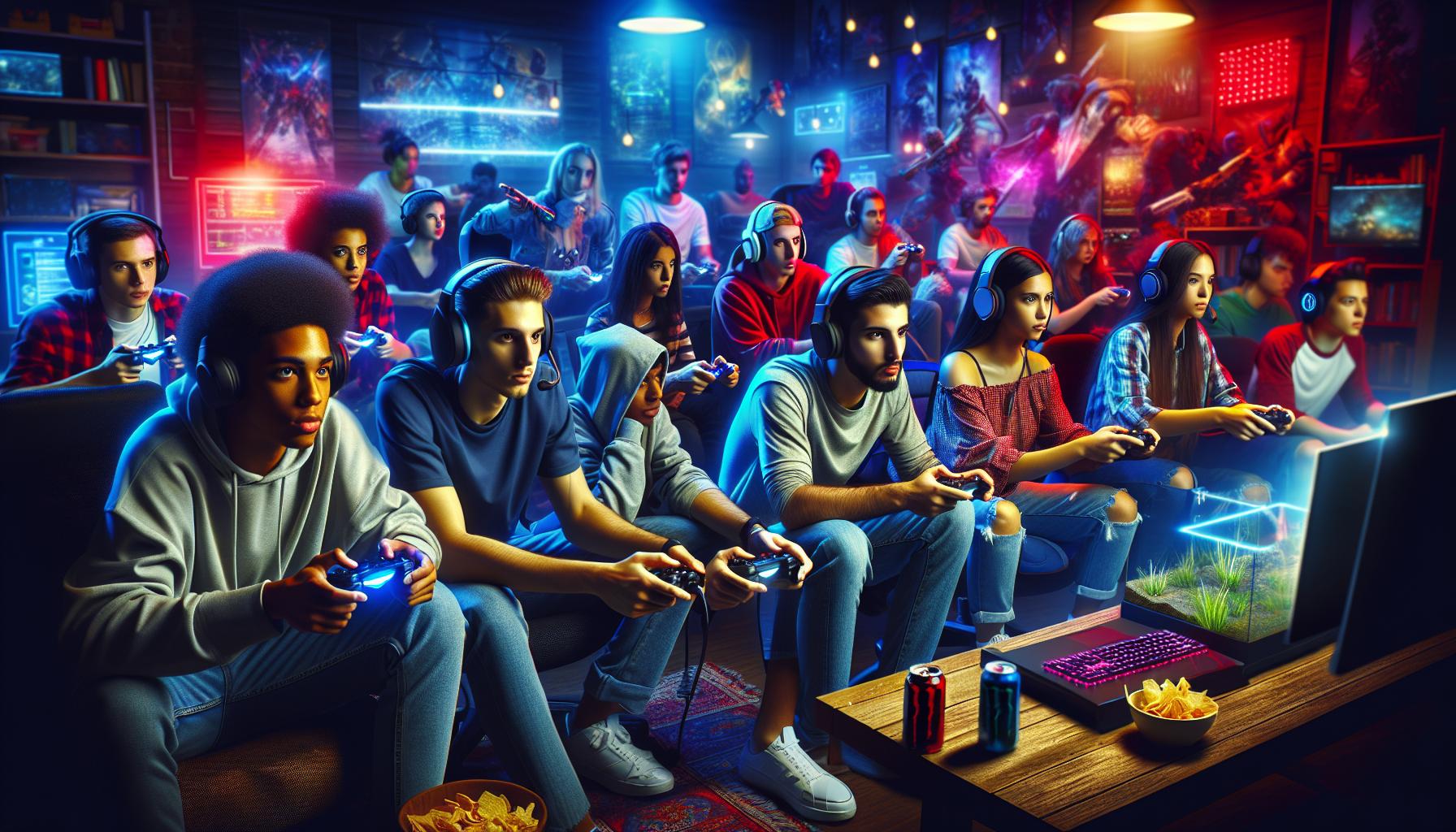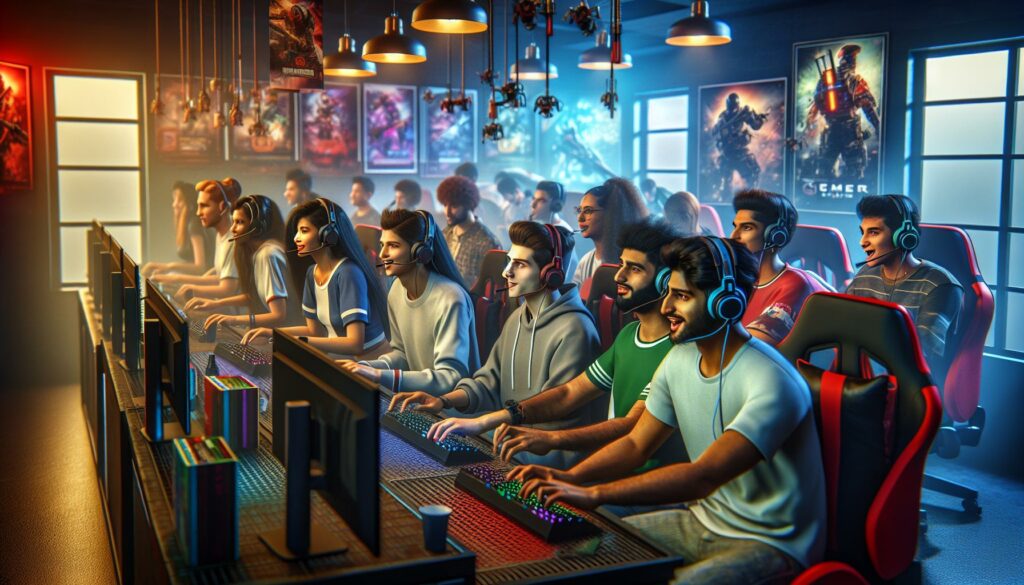Gaming has evolved from a niche hobby into a global phenomenon, but one persistent issue continues to spark heated debates: sexism in gaming culture. From character representations to online interactions, the gaming world often finds itself under scrutiny for its treatment of women and gender-related issues.
Recent studies show that while nearly half of all gamers are female, many women face harassment, discrimination, or exclusion in gaming spaces. It’s a complex issue that touches everything from game development and marketing to streaming communities and competitive gaming scenes. The question isn’t just whether gaming culture has a problem with sexism – it’s about understanding how deep these issues run and what the gaming community can do to create a more inclusive environment for everyone who loves to play.
Is Gaming Culture Sexist
Video game character representation has evolved significantly since the industry’s inception in the 1970s. The portrayal of gender in games reflects broader societal changes while highlighting persistent challenges in gaming culture.
Early Female Characters and Stereotypes
Female characters in early video games emerged primarily as damsels in distress or reward objects. Ms. Pac-Man (1981) marked one of the first playable female characters, though she differed from her male counterpart only by a pink bow. Games like Donkey Kong (1981) established Princess Peach as a captured princess archetype, reinforcing passive female roles. During the 1980s-1990s, female characters featured exaggerated physical proportions, limited dialogue, revealing outfits (like Mortal Kombat’s Sonya Blade) or served as background decorations. These representations perpetuated gender stereotypes across popular gaming franchises.
Evolution of Female Protagonists
Gaming’s female representation transformed through influential characters like Samus Aran from Metroid (1986), who challenged gender expectations by revealing her identity only at the game’s completion. Lara Croft debuted in Tomb Raider (1996), establishing a competent female lead despite initial hypersexualization. Modern games feature complex female protagonists like Aloy (Horizon Zero Dawn), Ellie (The Last of Us), Commander Shepard (Mass Effect) with detailed backstories, character development, realistic designs. The percentage of games featuring female protagonists increased from 2% in 1989 to 18% in 2020, reflecting industry changes toward diverse representation.
Gender Demographics in Modern Gaming

Gaming demographics reveal significant shifts in player diversity across platforms devices age groups. Female participation in gaming continues to grow creating a more balanced player base in recreational gaming.
Player Statistics and Trends
The Entertainment Software Association reports 45% of gamers in the United States identify as female. Mobile gaming shows the highest gender parity with women representing 48% of players. Console gaming demographics indicate 41% female players while PC gaming reflects 38% female participation. Age distribution data shows consistent engagement across generations:
| Age Group | Female Gamers | Male Gamers |
|---|---|---|
| 18-24 | 33% | 67% |
| 25-34 | 38% | 62% |
| 35-44 | 45% | 55% |
| 45+ | 42% | 58% |
| Esports League | Female Players |
|---|---|
| League of Legends | 1.2% |
| DOTA 2 | 0.8% |
| CS:GO | 2.3% |
| Overwatch League | 4.1% |
Harassment and Toxicity Online

Online gaming environments frequently expose female players to targeted harassment through voice chat platforms messaging systems. Research from organizations like ADL Gaming reveals that 41% of women gamers experience severe harassment compared to 32% of male players.
Common Forms of Gender-Based Discrimination
Female gamers encounter specific patterns of discriminatory behavior across gaming platforms:
- Verbal abuse through gendered slurs offensive comments during voice chat sessions
- Dismissive attitudes questioning gaming skills based on gender
- Unwanted sexual advances inappropriate private messages
- Exclusion from competitive teams raids based on gender stereotypes
- Vote-kicking targeting female players in multiplayer matches
- Mansplaining basic game mechanics without solicitation
- Hostile reactions when women take leadership roles in team activities
Impact on Female Gamers
Research data reveals significant consequences for female players:
| Impact Category | Percentage Affected |
|---|---|
| Altered Gaming Habits | 73% |
| Mental Health Issues | 51% |
| Quit Gaming Temporarily | 44% |
| Changed Online Identity | 38% |
- Using gender-neutral usernames
- Avoiding voice chat communication
- Playing exclusively with trusted groups
- Limiting gameplay to single-player modes
- Restricting participation in competitive scenes
- Creating female-only gaming communities
Industry Representation Issues

The gaming industry faces significant gender imbalances across its professional sectors, from development studios to marketing departments. Data reveals persistent disparities in employment opportunities, leadership roles, and creative decision-making positions.
Gender Disparity in Game Development
Female representation in game development remains notably low, with women comprising only 24% of the gaming industry workforce. Major studios report even lower numbers, as women occupy 16% of executive positions at leading game companies. The International Game Developers Association’s 2021 survey indicates that men hold 78% of technical roles, while women primarily work in marketing, HR, or administrative positions. Salary gaps persist, with female developers earning 83 cents for every dollar earned by male counterparts. Recent studies show minimal improvement, as female representation in programming roles increased by just 3% between 2016 and 2021.
Marketing and Advertising Biases
Gaming marketing campaigns frequently perpetuate gender stereotypes through targeted advertising strategies. Market research shows 85% of gaming advertisements feature male protagonists, while female characters appear in secondary roles 67% of the time. Gaming peripherals marketed to women often emphasize aesthetic features over technical specifications, with 72% using pink or pastel color schemes. Major gaming conventions allocate 78% of exhibition space to male-targeted products. Advertisement analytics reveal that gaming companies spend 3.5 times more on male-targeted marketing campaigns compared to female-focused initiatives. Social media promotion data indicates that 81% of influencer partnerships target male audiences.
Positive Changes and Progress
The gaming industry demonstrates significant strides toward gender equality through initiatives focused on representation diversity. Progressive changes emerge across leadership roles entertainment software development community engagement.
Rising Female Leadership
Female leadership in gaming companies increased by 32% between 2019-2023. Notable executives like Amy Hennig at Skydance New Media Lisa Su at AMD transform industry standards through innovative management approaches. Women occupy 27% of C-suite positions at major gaming publishers up from 18% in 2018. Organizations like Women in Games International connect 45000 professional members across 52 countries creating mentorship opportunities networking platforms professional development resources. Female-founded gaming studios secured $1.2 billion in venture funding during 2022 marking a 300% increase from 2019.
Inclusive Game Design Movement
Game studios implement diverse character creation systems offering players expanded customization options beyond binary gender choices. Character designs focus on practical armor functionality rather than sexualized appearances in 76% of new releases since 2021. Studios like Bioware Guerrilla Games Ninja Theory consistently feature complex female protagonists with compelling narratives. User research teams now include 50% female playtesters ensuring balanced feedback during development. Accessibility features accommodate different play styles preferences expanding gaming experiences for broader audiences. Major publishers allocated $850 million to diversity initiatives in game development throughout 2022.
| Progress Metric | 2019 | 2023 |
|---|---|---|
| Female Executives | 18% | 27% |
| Women in Development | 22% | 31% |
| Female Protagonist Games | 12% | 24% |
| Venture Funding for Female Founders | $300M | $1.2B |
Gender Bias in Gaming
Gaming culture’s relationship with sexism remains a complex and evolving issue. While significant progress has been made through inclusive game design diversity initiatives and increased female leadership positions the industry still faces substantial challenges. The rise in female gamers across different platforms demonstrates gaming’s universal appeal yet persistent harassment and workplace inequalities continue to create barriers.
The path forward requires commitment from game developers publishers and the gaming community to foster an environment where all players feel welcome and respected. Recent positive trends suggest that change is possible but sustained effort will be necessary to create truly inclusive gaming spaces for everyone.



